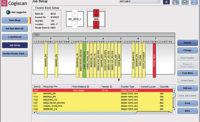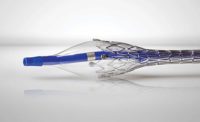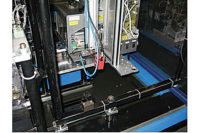According to ISO 8402, traceability is the “ability to trace the history, application or location of an entity by means of recorded identifications.”
In today’s electronics industry, that concept has never been more important. The risks associated with the industry’s increasingly complex supply chain have made traceability absolutely critical for electronics assemblers, regardless of their size or scope.
A traceability system can provide clear insight into the various steps in the manufacturing process. That information can then be used for a variety of purposes, including process improvement, defect resolution, regulation compliance and protecting brand integrity. Traceability is also important for Six Sigma programs.
When establishing a traceability system, engineers have many options to consider, from simple batch or lot information all the way up to a full view of process activities that serialize down to the component level.
Why Is Traceability Critical?
Customers expect to receive both quality and reliability in the products they buy. If the product fails or doesn’t meet their needs, a replacement is often covered by a warranty or product recall at the expense of the supplier. To reduce this cost, OEMs often seek to share the burden with their supply chain partners. As products become more complex, this trend will only increase.
Most OEMs require a legally binding agreement that details the specifics of their relationships with suppliers. These agreements typically include an “indemnification” or “liability” clause that outlines how the costs of recalls, warranties and other product-related failure activities are to be shared with the supplier.
The scope of exposure that is assumed in any supplier agreement is a significant business risk. According to standard industry averages, warranty claims represent approximately 5 percent of sales in the electronics industry. However, contractual agreements also include financial and legal responsibility for any product failures, intellectual property infringements, regulatory violations and many other liabilities.
While the need for traceability systems often stems from customer requests or contractual agreements, production teams also face increasing internal pressure to reduce costs through lean manufacturing practices. Lean requires engineers to identify areas for improvement, such as supply inputs, non-contributing processes, and worker errors. Armed with this data, engineers can determine the root-causes of problems and create corrective action plans.
A traceability program provides the data needed to monitor and quickly correct undetected issues in production processes. Traceability data can significantly improve manufacturing cycles, changeover time, sales quoting, shipping, data entry and inventory management. This data can help uncover inefficient processes or repetitive work, leading to reduced waste, errors and non-value-adding activities. Traceability systems that are
implemented in conjunction with a lean initiative can reduce total product cost by nearly 10 percent.
Traceability systems can also help detect defects early. In an average surface-mount assembly line, there are more than 800 million opportunities annually for process or component defects to occur. Whether the issue is driven from an engineering change order or an unexpected supplier defect, catching the error as early as possible is critical. By isolating defective components or finished goods prior to customer shipments, manufacturers can reap substantial direct and indirect cost savings.
Even if defects are not detected until after customer shipment, most traceability systems will still provide enough visibility to contain the risk to a smaller sample of finished goods. The importance of early detection is demonstrated by the estimate that recall costs increase ten-fold at each step along the product life cycle.
Another benefit of traceability systems lies with regulatory compliance. Manufacturers that sell into multiple vertical markets, such as aerospace, automotive and medical, must meet numerous compliance requirements. In addition to customer expectations, manufacturers must comply with REACH, RoHs, ISO, UL and other requirements. Abiding by these rules and regulations can require considerable amounts of manual work and hard-copy documentation.
Ironically, demonstrating compliance often contradicts lean manufacturing principles and also creates additional liabilities that are typically outlined in supplier agreements.
Data captured from production activities and supply inputs can simplify the process of complying with regulations and mitigate the possibility of violations. Whether it relates to conflict minerals, process validation, containment or audit requests, implementing a traceability system can reduce the time and resources needed to capture the data that various stakeholders are requesting.
Key Benefits of Traceability
When shopping for a traceability system, a primary concern is often return on investment. There are four key areas where manufacturers see the most benefits: production efficiency; warranty and recall; counterfeit and unspecified components; and regulatory compliance.
In a typical manufacturing environment, materials comprise approximately 50 percent of the total cost of a product. However, in the electronics industry, material costs are typically closer to 80 percent.
Considering the importance of materials in the production process, manufacturers stand to benefit from faster access to more comprehensive data. This data affects productivity in two areas: error-proofing and identifying waste.
With a traceability system, manufacturers can quickly detect production problems and inefficiencies. Simple enhancements—such as digital storage and access to documents, consolidating databases, simplifying expense and cost-recovery systems, and automating manual processes—can have a major impact on overall production costs.
Leveraging traceability systems in lean manufacturing processes can help drive significant qualitative and quantitative improvements that impact profitability. Quantitative benefits include a 75 percent reduction in data entry time, a 32 percent reduction of work in progress, and an 18 percent improvement in quality. Traceability systems also provide qualitative benefits such as improved inventory accuracy, material and workflow improvements, reduced kitting errors, and avoided supply shortages.
Warranty expenses are the most obvious consequence of quality problems that are not detected before shipping. Defective components have cost the automotive industry billions in recall and warranty claims in the past few years. And yet, although the automotive industry generates more than 1 trillion pieces of traceability data annually, only 20 to 30 percent of all vehicle components are actually tracked for regulatory and warranty purposes. So despite several well-publicized recalls, the industry still has room to improve by using traceability data.
The automotive industry is not the only business segment to have experienced major recalls recently. Manufacturers of consumer electronics,
appliances, medical devices and airplanes have all faced increased scrutiny over the integrity of their components and finished goods. Research estimates that consumer electronics manufacturers, communication carriers and retailers spent $16.7 billion to process returned merchandise in 2011. That same research indicates that 5 percent (or a staggering $835 million) of that returned merchandise were defective products. Given the numbers, even small, incremental improvements can have a considerable impact on warranty processing costs and overall profitability.
Product recalls and warranties receive more attention than counterfeit or non-compliant components, but recent research suggests this issue is becoming a serious threat to supply chain integrity. A 2010 study by the Commerce Department concluded that counterfeiting incidents had increased more than 240 percent during a three-year period. The study blamed the increase on poorly documented inspection protocols, inadequate inventory management and procurement practices, and a lack of dialogue along the entire supply chain (specifically, insufficient traceability and accountability within supply chain organizations).
As the liability for product recalls expands through the supply chain, manufacturers will need to be more vigilant of their own supply chains. A traceability system can assist in this regard by helping to manage inbound inspection and supplier control protocols. The ability to track this data is vitally important to verify that the inputs into production are not deviating from standard acceptance specifications. This visibility is valuable in all customer segments, but specifically in the medical industry where a historical record of components is absolutely critical.
Electronics manufacturers face demanding environmental and process compliance obligations across all market segments and regions, as well as from OEMs. Many of these regulations are a prerequisite for selling into certain markets and customer groups. Demonstrating compliance is often taxing and inefficient, but a traceability system can dramatically simplify those activities.
Environmental compliance is required by multiple stakeholders, including government agencies, industry associations and OEMs. While there is some overlap between these parties, each layer presents additional challenges to electronics manufacturers. In Europe, for example, more than 1,000 substances in 58 categories are covered by REACH rules. While only a portion of those substances pertain to the electronics industry, the numbers demonstrate the sheer volume of monitoring that takes place globally. Many industries have strict business requirements that suppliers must comply with. The aerospace, automotive and medical industries all have their own set of compliance requirements that extend beyond environmental needs into process and quality-control activities. Complying with these requirements can be time-consuming and labor intensive. Most programs are designed to help the collective supply chain achieve zero-defect rates and 100 percent on-time delivery targets.
Using manual and hard-copy documentation to demonstrate compliance with these myriad regulations is time-consuming and costly. Data from traceability systems can simplify and reduce errors associated with compliance requirements. The accuracy and depth of this functionality can be leveraged as an outright competitive advantage. Indeed, more than 55 percent of electronics manufacturers acknowledge that compliance reporting is a major challenge.
Considerations for Traceability Systems
While traceability systems improve manufacturing processes and reduce costs associated with product defects or noncompliance, the financial cost and value of implementing a system is an important business consideration. Thankfully, a variety of options are available to meet the needs of manufacturers, ranging from the basic job- or work-order level that typically documents only the manufacturing site and date, up to serialized systems that capture full process and material attributes down to the production-unit level.
When considering a traceability system, most manufacturers build their functionality based on three factors:
- The amount of data to be captured.
- How long the data will be kept.
- How accurately the system needs to isolate corrupt processes or components.
Most traceability systems include three main components: hardware, software and marking equipment.
Hardware ranges significantly in both capabilities and cost. Basic, entry-level systems require the lowest level of investment to implement, but are typically limited in their functionality. Speed, data storage, capacity and connectivity are important elements of a hardware system to consider when aligning your level of investment with the desired functionality of a traceability system.
Software plays the most critical role in the overall traceability system, since it bridges all input, process and output needs. Software is the tool that allows managers to leverage the data captured throughout the facility to improve quality, yield and compliance. As the pressure for mobile and wireless devices grows, software and cloud capabilities are becoming more critical for supporting traceability data requirements in production.
The final component of traceability systems is the method of marking materials as they move through the production process. The three most frequently used methods are: bar code labeling, direct marking and RFID technology. Each method has its own advantages and limitations.
With a variety of investment levels available, a traceability system can be adapted to meet the scope and pricing needs of manufacturers of any size or production mix. While most traceability systems are implemented as a result of customer requirements, their benefits go well beyond that need.
For more information on traceability technology and supplies, visit www.bradyid.com/traceability.








